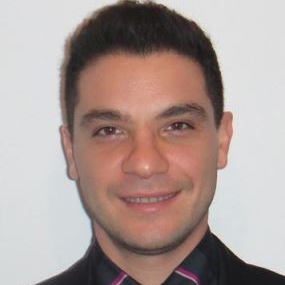Recent Advances in SAW Resonators
A special issue of Micromachines (ISSN 2072-666X). This special issue belongs to the section "A:Physics".
Deadline for manuscript submissions: 30 June 2024 | Viewed by 2893
Special Issue Editors
Interests: RF MEMS devices; SAW resonators; SAW sensors
Interests: piezoelectric-based micro resonators and MEMS; piezoelectric thin film deposition; film bulk acoustic resonator (FBAR); surface acoustic wave (SAW); piezoelectric-based and resistive microsensors and biosensors; laser-based deposition techniques for MEMS and sensors applications (PLD, MAPLE, LIFT); microfabrication of MEMS; multiphysics modeling of acoustic waves
Special Issues, Collections and Topics in MDPI journals
Special Issue Information
Dear Colleagues,
We cordially invite you to contribute to the Special Issue of Micromachines entitled “Recent Advances in SAW Resonators”.
SAW resonators are the key components of SAW communication devices such as filters, duplexers, multiplexers, and oscillators. They are also the key sensing components for various SAW sensors. The performance of SAW communication devices and sensors is strongly dependent on the performance of SAW resonators. The improvement of the quality factor (Q) of SAW resonators can effectively reduce the insertion losses of filters and increase the communication distance of passive wireless SAW sensors. An increase in the effective electromechanical constant (Kt2) of SAW resonators can increase the bandwidth of SAW filters. The center frequency of most commercial SAW filters is below 3 GHz, due to the difficulty in developing SAW resonators with both large Kt2 and high Q at very high frequency. The recent advances in SAW resonators will bring enormous new opportunities for the development of next-generation SAW communication devices and sensors. This Special Issue aims to showcase a collection of manuscripts from scholars worldwide working on various aspects of SAW device development, from fundamental research to practical applications. In this Special Issue, original research articles and reviews are welcome. Research areas may include but are not limited to the following:
- SAW resonators with high frequencies;
- SAW resonators with high Q;
- SAW resonators with high Kt2;
- SAW resonators with low TCF;
- SAW filters, duplexers, multiplexers, oscillators, delay lines, etc.;
- SAW physical sensors (temperature, mass, mechanical, etc.);
- SAW chemical and gas sensors;
- SAW biosensors;
- Passive wireless SAW sensors;
- SAW sensors in harsh environment;
- SAW devices on heterointegrated piezoelectric materials;
- Flexible SAW devices;
- Advanced package for SAW devices.
We look forward to receiving your contributions to this exciting Special Issue, which will offer invaluable insights into the development of SAW devices.
Best regards,
Dr. Yujie Ai
Dr. Fabio Di Pietrantonio
Guest Editors
Manuscript Submission Information
Manuscripts should be submitted online at www.mdpi.com by registering and logging in to this website. Once you are registered, click here to go to the submission form. Manuscripts can be submitted until the deadline. All submissions that pass pre-check are peer-reviewed. Accepted papers will be published continuously in the journal (as soon as accepted) and will be listed together on the special issue website. Research articles, review articles as well as short communications are invited. For planned papers, a title and short abstract (about 100 words) can be sent to the Editorial Office for announcement on this website.
Submitted manuscripts should not have been published previously, nor be under consideration for publication elsewhere (except conference proceedings papers). All manuscripts are thoroughly refereed through a single-blind peer-review process. A guide for authors and other relevant information for submission of manuscripts is available on the Instructions for Authors page. Micromachines is an international peer-reviewed open access monthly journal published by MDPI.
Please visit the Instructions for Authors page before submitting a manuscript. The Article Processing Charge (APC) for publication in this open access journal is 2600 CHF (Swiss Francs). Submitted papers should be well formatted and use good English. Authors may use MDPI's English editing service prior to publication or during author revisions.
Keywords
- SAW resonators with high frequencies
- SAW resonators with high Q
- SAW resonators with high Kt2
- SAW resonators with low TCF
- SAW filters, duplexers, multiplexers, oscillators, delay lines, etc.
- SAW physical sensors (temperature, mass, mechanical, etc.)
- SAW chemical and gas sensors
- SAW based e-noses
- SAW biosensors
- passive wireless SAW sensors
- SAW sensors in harsh environment
- SAW devices on heterointegrated piezoelectric materials
- flexible SAW devices
- advanced package for SAW devices.







